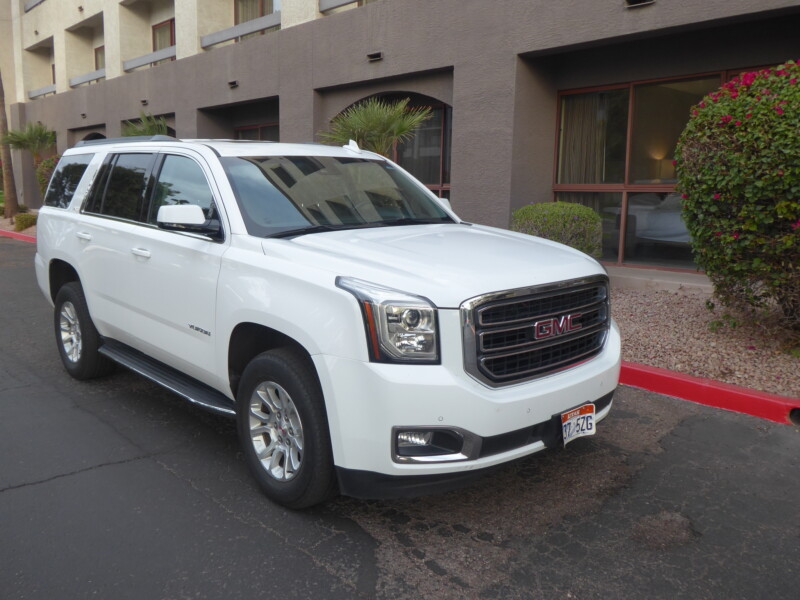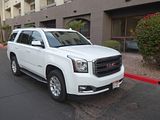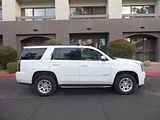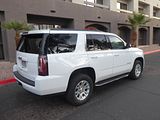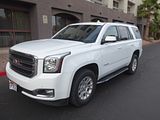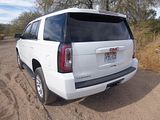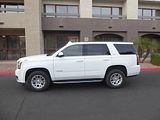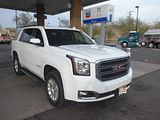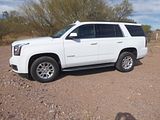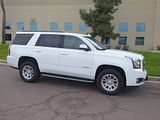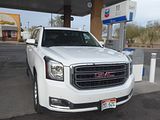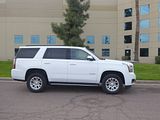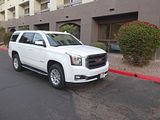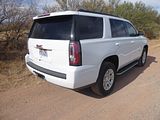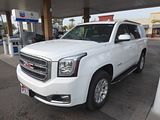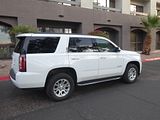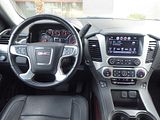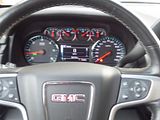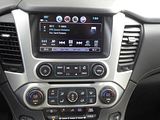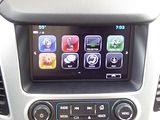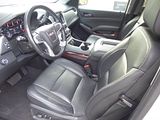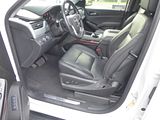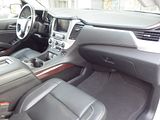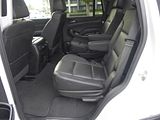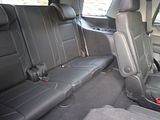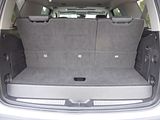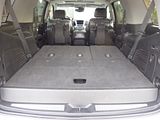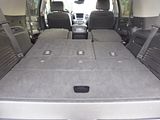As a result of their extreme financial difficulties in 2009, following the global credit crunch of a couple years earlier, GM undertook a major rationalisation of their brands, closing down Pontiac and Saturn, and off-loading SAAB, leaving themselves with just four: Chevrolet, Buick, Cadillac and GMC. Although a move forced on them by the need for cost-savings, there was plenty of logic behind the decision, as this rationalisation meant that they would be able to position those remaining more clearly in the market with less of the overlap that had been apparent in the 80s and 90s, a time where there was also still Oldsmobile in the portfolio. Cadillac is clearly the luxury brand, with ambitions to compete at the high end of the market, and Chevrolet is seen very much as the volume brand with value pricing across a vast range of cars and trucks. Buick sits somewhere between the two, as a sort of affordable premium offering, with some of the range exploiting the European connection (until that ended with the disposal of the European business to PSA in 2017) and then there is GMC. Originally this was created as a truck brand, but the line between truck and car blurred with the arrival of SUVs and has got even less clear now that most manufacturers, GM included offer far more in the way of Crossover and SUV vehicles than the traditional saloon, coupe and hatchback models. So we’ve got a situation now where GMC offer a range of trucks (such as the full-sized Sierra and slightly smaller Canyon, as well as a trio of Crossovers. The smallest of these, the Terrain, is based on the Chevy Equinox but has its own different looking body, and the same is true for the Acadia, which in its current generation even shrank compared to its predecessor, so it is smaller than the Chevy Traverse and Buick Enclave, and then at the top of the range are the Yukon models, available in regular and XL guise. Barring badging and a few very minor other styling details, these are to all intents and purposes identical to the Chevrolet Tahoe and Suburban. They cost quite a bit more, though, with extra equipment accounting for some of that difference. It would seem to be a price that many are happy to pay, as whilst the Chevy versions do sell in greater quantities, sales of the GMC models are also strong. Both the Chevrolet and the GMC versions can be found in some quantity in the US rental fleets as these relatively simple, and given their size, inexpensive vehicles are just what many people want when they have lots of people and luggage to haul. A new fifth generation Yukon was premiered early in 2020 and is now in production, but it is the fourth generation cars, along with their equivalent Chevrolets that are still on rental car duty at present. Whilst I’ve driven one of these in Tahoe guise, back in early 2019, I’d never sampled the equivalent Tahoe until, on the last day of my November 2021 trip to Arizona I spotted a freshly washed example as one of the few cars available in a very sparsely stocked Presidents’ Circle area at Pheonix airport. I decided to take it for the day.
There is keyless starting on this version of the Yukon. With the button pressed, the engine fires into life but even at idle and when cold, the noise is quite subdued, though there is some evidence of the V8 rumble if you listen carefully. Once underway things remain quiet, with noise levels generally well suppressed. This is a large and heavy car, with a big frontal area, so even with 355 bhp available from that 5.3 litre V8 engine, it is never likely to feel that fast, and that proved to be the case, even though the quoted 0 – 60 time is a fairly brisk sounding 7 seconds. But the Yukon is smooth and there is ample acceleration available though, as I found with the Tahoe, if you need an instant burst of acceleration, you do have to be quite forceful with the accelerator pedal and work the engine quite hard. The Yukon has a six speed automatic transmission and in more sedate motoring, it shifts smoothly between the gears, but it does need encouraging sometimes to change down and help out with the acceleration. Gearing is such that on a freeway cruise the engine is turning over fewer than 2000 rpms, which helps with the sense of refinement. I covered no less than 380 miles in the day I had the Yukon and it needed a full 19.5 gallons to fill it up, which computes to 19.49 mpg US or 23.28 mpg Imperial, about what you would expect from a car of this size and comparable to what I have seen in the Yukon’s rivals. Most of that mileage was covered at a steady speed, so I have to assume that in other conditions, the figure would be somewhat worse. Size does have its penalties at the pumps! That refill was fairly wallet emptying, even at the low fuel costs that you get in Arizona, but a full tank would really sting, as it holds no less than 26 gallons. This does mean that you have a very long range in the car, though, if you really want to keep motoring on without the need for any stops.
Size also means that you are getting a vehicle where “nimble” is not a word you can use. You are always aware of the fact that this is one of the largest passenger cars about, and it weighs a not inconsiderable 5500 pounds. The steering is light, but not unduly so, so the Yukon is easy to drive, but it is also a car you need to remember has a high centre of gravity and is not designed to take on twisty roads with any sort of gusto. The test car had the optional AWD system. There is a dial on the dash which allows you to choose between rear wheel drive, all wheel drive or “auto” where the car will make decision. Even with just rear wheel drive selected, which is how I left things during my time with the car, there is plenty of grip available. The AWD system is there more to help when the surface underneath gets poor rather than to allow you to go faster in the bends. Body roll is kept reasonably well in check. All bar the top spec Yukon models come on relatively high profile 265/65 R18 wheels, which, coupled with the soft suspension means that the Yukon rides quite nicely, without undue tendency to float or wallow. This was in something of a contrast to the 2019 Tahoe I drove where the ride, on California’s rather challenging road surfaces, proved to be really rather poor at times I wondered then if there was something wrong with that car and now I suspect there really was, as this one was so much better. Considering the Yukon still has a body-on-frame construction and does without independent rear suspension, what GMC have achieved is impressive, but no-one is ever going to take a Yukon or a Tahoe out just for the fun of driving it. The brakes proved effective, though thankfully I never had to put them to the ultimate test. There is a foot operated pedal-based parking brake. Visibility is generally good with the high set driving position helping, and there are large areas of glass the length of the car. There is a blind spot warning system, and of course a rear-view camera as mandated on all cars in the US for the past couple of years. Whilst the car is easy to position on the road, when you come to parking it, you have to remember this is a massive vehicle with the front extending a long way and the rear being way further back than you are used to with smaller vehicles.
The inside of the Yukon tries to strike a balance between practicality and a sense of some luxury, which is needed to justify the price difference of the Yukon over the somewhat cheaper sister model Chevrolet Tahoe. Surfaces comprise a mix of stitched leather, some “metal” effect and dark “wood” inlays as well as some decent quality plastics. The steering wheel I leather wrapped and heated. The end result will not win prizes for style, but it is perfectly acceptable. The dash is the same as you will find in a Tahoe. There is one instrument cluster with two large dials for the speedometer and rev counter and four smaller ones for not just fuel level and water temperature but also oil pressure and an ammeter which are set in the upper central part of the cluster above an area used for trip computer displays. The gearlever is on the right of the column, which means there is only room for a single column stalk, om the left, which operates indicators and by twisting it, the wipers. Lights, with an auto setting are on a rotary dial on the dash to the left of the wheel. Also dash mounted is the selector for the AWD system. There are touch pads on the steering wheel hub for cruise control, audio repeaters and to cycle through the trip computer displays. The centre of the dash contains the 8” colour touch screen for the GM My Link system for audio and other infotainment features. These include Apple CarPlay, Android Auto, a nine-speaker Bose sound system, five USB ports, Bluetooth, voice recognition, satellite radio, HD Radio, and a Wi-Fi hot spot. There are still a number of knobs and buttons which makes using the radio easier. The system proved decently responsive and most of the functions you might want are easily found. Beneath this are the controls for the tri-zone automated climate control.
This is a big car, quite high off the ground, but thankfully there are running boards which make it a lot easier to get in and out, especially for someone like me with relatively short legs. Once installed, you really do have that proverbial commanding view looking over or down at many other vehicles. The front seats have electrical adjustment and there is a 2 position memory to store the settings once you’ve found your ideal driving position. The seats are trimmed in leather and have both heating elements and cooling fans. The steering column is also electrically adjustable. I did quite a long journey in the Yukon in quest of the elusive blue skies which always appeared to be ahead but which I ever quite reached and so was able to test out the comfort, and found them pretty good even though at first glance they just looked very large and a little shapeless.
Standard in the Yukon is a rear bench seat with ample space for three but there is an option, which was fitted to the test car, of having a pair of separate “captain’s chairs”. There is a definite feeling of space here, with lots of legroom even if the front seats are set well back, and there is more headroom than even the tallest could possible need. Because the seats are separate, with a sizeable gap between them, shoulder width is not compromised either. The seat position is fixed but you can alter the angle of the seat backrest. Occupants here get map pockets on the back of the front seats and their own separate climate control buttons. The second row of seats tip up and then forwards, well out of the way, so it is not that hard to get into the third row. Once in, there amount of space is surprisingly tight for such a large vehicle. AS often happens, you sit on seats which are set quite low, meaning headroom is definitely not a problem but you end up with your knees up high, which would not be very comfortable for anything other than sort journeys. Probably even in such a big car, you need to think of the third row seats really as intended for children. There are moulded cupholders in the side panels.
The tailgate is massive and very heavy, but thankfully it has electrical assistance. As is so often the case with three-row cars, even ones as big as the Yukon, the boot is really quite small when all three rows of seats are erect. The boot floor is high, actually sitting above the level of the bottom of the tailgate, so if you want to go no higher than the window line, the load area is a bit more shallow than you might have expected, though there is a space for odds and end under the floor. Once you start lowering seats, though, you get a lot more luggage room. Even with just the rear-most seats folded down, there is a massive load area and this become truly gargantuan once the second row of seats goes down as well, though one consequence of having the individual second row seats is that there is quite a gap between them. Lowering the third row is easy as there are buttons by the tailgate to drop the seats down. Inside the cabin there is plenty of provision for odds and ends. Whilst the glovebox is on the modest size, there are also some useful door pockets and there is a very deep central armrest cubby as well with a recessed area on the upper surface, a useful well where you might expect to find a gearlever, as a hidden stowage area behind the infotainment screen, which lifts up to reveal it.
GMC built the 2020 Yukon in four trim levels: SLE, SLT Standard Edition, SLT, and Denali all with the choice of the regular model or an extended length XL version, equivalent to the Chevrolet Tahoe and Suburban respectively. A 355 bhp V8 engine and a six-speed automatic transmission are standard in all but the Denali, which boasts a 420-bhp V8 and a 10-speed automatic. The base SLE comes with an 8-inch touch screen, Apple CarPlay, Android Auto, USB ports, a Wi-Fi hot spot, a nine-speaker Bose stereo, HD Radio, satellite radio, Bluetooth, remote start, tri-zone automatic climate control, a rearview camera, GM’s Teen Driver, front and rear parking sensors, and alloy wheels. A hands-free liftgate, power-adjustable pedals, and an Enhanced Driver Alert package with lane departure warning, lane keep assist, a safety alert seat, and a pre-collision warning and braking system all feature. For the SLT Standard Edition, all of the SLE’s options are standard in the SLT Standard Edition, along with leather upholstery and heated front seats. The SLT gains perforated leather upholstery, ventilated front seats, heated second-row seats, power-folding second- and third-row seats, a heated and power-adjustable steering wheel, proximity keyless entry, blind spot monitoring, rear cross traffic alert, and lane change alert. You may find models with navigation, adaptive cruise control, and/or a sunroof. Some SLTs have a Graphite Performance Edition package, which adds the stronger V8 engine, a head-up display, an adaptive suspension system (Magnetic Ride Control), and gloss-black styling elements. The top-of-the-line Denali has the SLT’s Graphite Performance Edition package, a 10-speaker Bose stereo system, wireless device charging, and captain’s chairs for the second row. The Denali also features an adaptive suspension system that helps it ride more smoothly than the other Yukon models and is easy to recognise with a honeycomb style front grille.
Although it seems hard for Europeans to believe, lots of Americans really do feel the need for a vehicle of this size. Whilst there are options from Toyota and Nissan, respectively with their Sequoia and Patrol, this really comes down to a Ford v GM discussion. And if you decide that GM have the answer, then Chevy Tahoe or GMC Yukon. GM’s current offerings have been around since the start of 2014 (as a 2015 model year car), and whereas they were class leaders on debut, they were upstaged when Ford replaced their Expedition model in 2017. The Ford may lack the rumble of a V8 engine these, days, but having driven that car as well as a Tahoe and now this Yukon, I think I would prefer the Ford, even if the market is still voting the other way with the GM duo winning out in the showroom. The Ford is equally practical, equally spacious (and massive), and whilst the looks may be a bit awkward from some angles, it was that bit less ungainly to drive. It will be interesting to see if the next generation GM models, production of which started during 2020 and examples of which are now in showrooms if not yet the rental fleets, manage to beat it or not. Until they do arrive, if you need a huge vehicle, then the Yukon is not a bad bet. If you are renting one, then a Tahoe or a Yukon will cost you the same, but if you were to buy one, the Yukon is notably pricier. You are getting slightly nicer trim and a few more features but whether the extra cost is worth it is perhaps a moot point.

